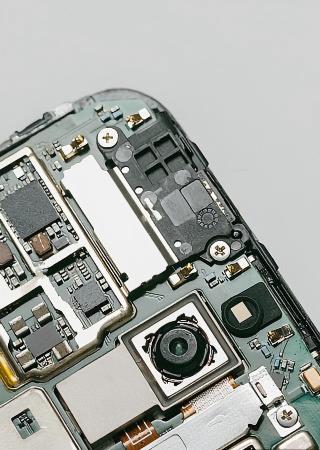crowdjury94
About
- Username
- crowdjury94
- Joined
- Visits
- 1
- Last Active
- Roles
- Member
Activity
-
In an ever-evolving realm of imaging technology, area scan cameras have emerged as a vital tool for a wide range of applications. They capture images over a 2D field, making them instrumental in fields such as manufacturing, robotics, and surveillance. By offering high-resolution and precise detail, area scan cameras are redefining how we see and engage with the world around.
As sectors continue to seek smarter and more effective solutions, the demand for advanced imaging technology only grows. Area scan cameras stand at the forefront of this movement, bridging the gap between traditional imaging methods and the demands of contemporary automation. These cameras' versatility and adaptability make them an indispensable asset for experts looking to enhance their imaging capabilities and streamline operations.
Overview of Area Scanners
Area scanners are essential tools in various industries, providing detailed imagery for purposes such as quality control, visual automation, and automated machinery. Differing from line scan cameras, which take images line-by-line, area scanners take a whole 2D representation in a single capture. This capability makes them ideal for still environments where a comprehensive image is required, facilitating detailed examination and calculation.
These cameras utilize a variety of image sensors, including CCD and complementary metal-oxide-semiconductor, to change light into digital signals. The advancement in imaging technology has led to improved sensitivity, minimized noise, and faster capture rates, allowing area scan cameras to produce clearer and more accurate images. Many versions also include functionalities such as the global shutter, which reduces motion blur, and various triggering options for synchronization with other equipment.
In applications where efficiency are key, area scanners excel due to their ability to process images rapidly. This makes them perfect for immediate observation and assessment activities. As technology continues to evolve, area scan cameras are becoming more flexible, with combined software applications enabling users to carry out detailed image processing directly, streamlining workflows and enhancing productivity in manufacturing and research environments.
Uses in Industry
Area scan cameras are essential in numerous commercial applications due to their ability to capture detailed images swiftly and effectively. One key use is in quality control and inspection processes within manufacturing environments. These cameras can be incorporated into assembly lines to check items for flaws, ensuring that only items meeting specifications proceed to the subsequent stage. The visual data they provide allows for prompt responses, reducing the risk of faulty products reaching the market.
In the automotive sector, area scan cameras play a critical role in streamlining visual inspections. They are used to inspect parts such as welds, paint finishes, and assembly correctness. The HD pictures captured enable manufacturers to identify minute discrepancies that might be overlooked by human checks, thus improving safety standards and performance. By incorporating these cameras into robotic systems, companies can boost their throughput while maintaining top-notch standards.
Another significant application is in the supply chain and warehouses. Area scan cameras are used for reading barcodes, reading labels, and tracking the transport of products. With the rising need for automation in logistics management, these cameras help optimize operations, improve accuracy in stock management, and lower staffing expenses. By providing live data on stock levels and locations of goods, area scan camera s contribute to a more efficient and transparent logistics environment.

Technological Progress
The field scan camera technology has seen remarkable advancements in recent years, primarily fueled by improvements in sensor design and picture processing functions. Modern sensors are now able to produce images with significantly elevated resolutions, which allow for more detailed inspections in various applications. With image sizes shrinking and the adoption of advanced materials, manufacturers can offer cameras that deliver high-definition images without compromising on speed or efficiency.
Another noteworthy advancement is the integration of AI and machine learning algorithms into the image processing workflow of area scan cameras. This integration enhances the capability to assess images in real time, providing immediate feedback and enabling automatic decision-making in industrial environments. As a result, these cameras are not just tools for taking images but are becoming essential components in intelligent manufacturing systems, where they can adjust to changing conditions and enhance the overall quality control processes.
Network integration has also advanced with the rise of Industry 4.0, where area scan cameras can now effortlessly integrate into connected systems. With enhanced communication protocols and interfaces, these cameras can transmit data in real-time with other machines or cloud-based systems. This capability allows for sophisticated analytics and deeper insights, making area scan cameras not just sources of visual data but essential parts of a cooperative ecosystem that promotes efficiency and innovation.
September 26